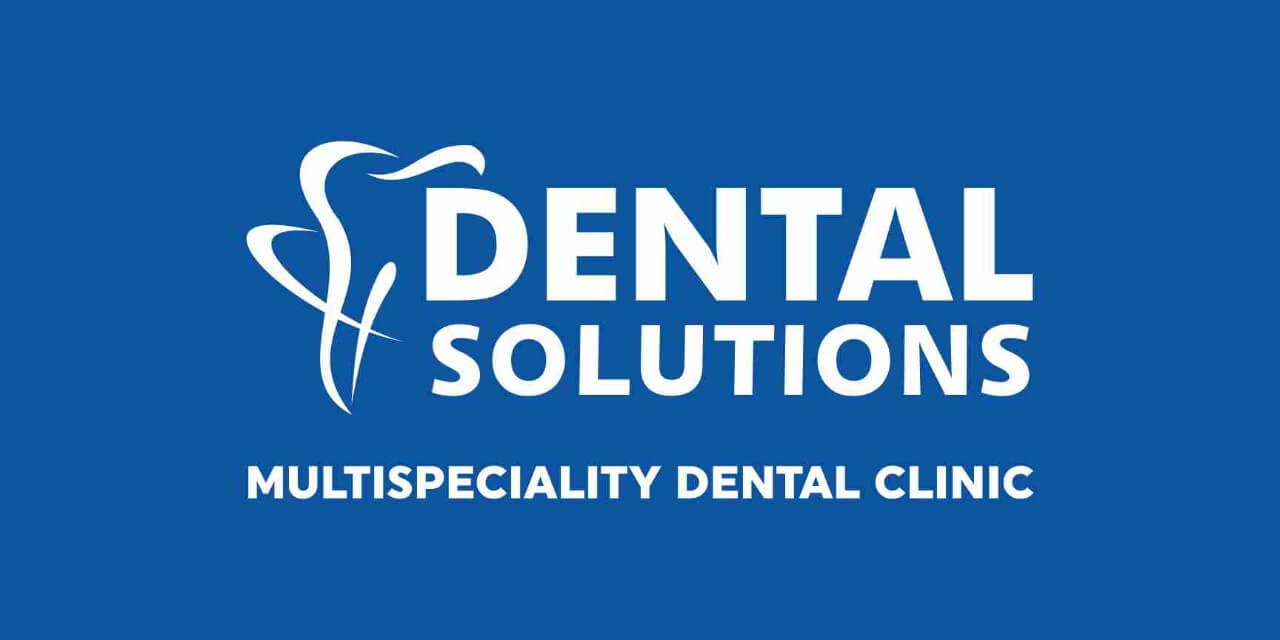Treatments
- Dental Implants
- Cosmetic Dentistry
- General Dentistry
- Root Canal
- Wisdom Teeth
- Orthodontic Treatment
- Periodontic Treatment
What are dental implants?
Dental implants serve as a reliable and effective solution for replacing missing teeth, offering both aesthetic and functional benefits. Comprised of finely engineered titanium, these implants are permanently affixed into the jawbone, providing a sturdy base for attaching a replacement tooth, known as a crown. With their longevity and seamless integration into your oral care routine, dental implants offer a lasting solution that closely mimics the natural teeth. Experience the confidence of a complete smile restoration with our advanced dental implant treatments.
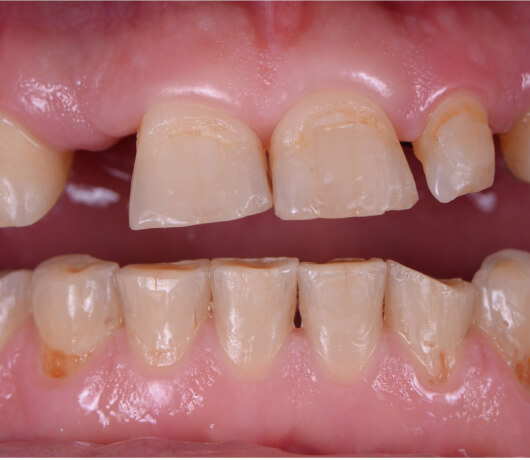
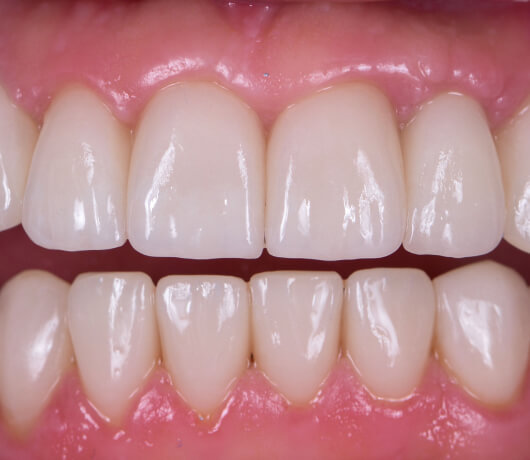
Porcelain veneers are prefabricated thin coatings of porcelain that are bonded to the front (labial) side of your teeth. These are used to mask or cover stained, chipped oa misaligned and go a long way in improving the aesthetics of your smile.
Porcelain Veneers
Porcelain veneers are prefabricated thin coatings of porcelain that are bonded to the front (labial) side of your teeth. These are used to mask or cover stained, chipped oa misaligned and go a long way in improving the aesthetics of your smile.
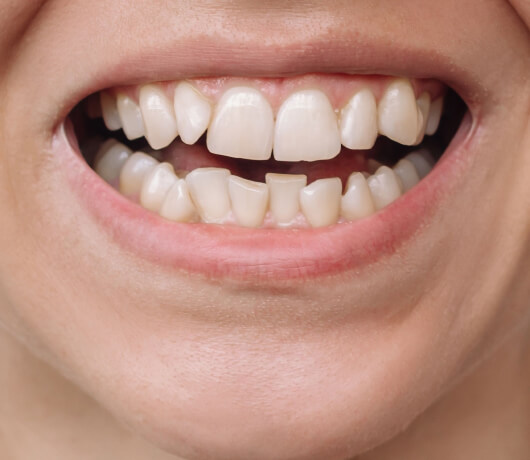
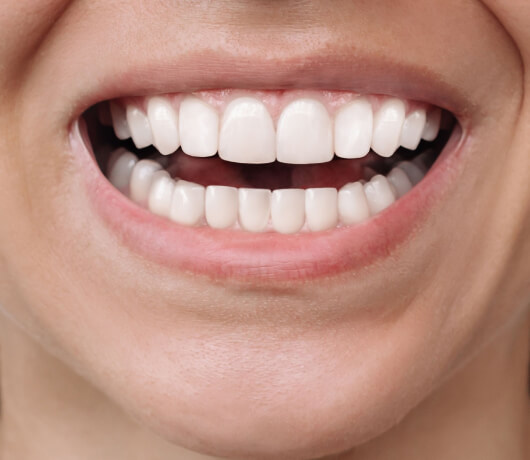
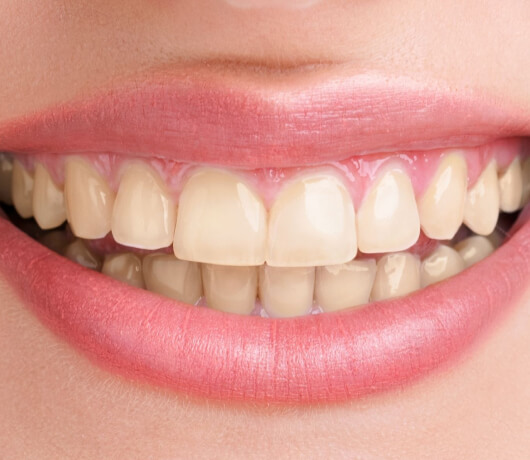

Teeth Whitening
Are you longing for a radiant, confident smile? Teeth whitening can make this dream a reality. This procedure safely lightens tooth color, diminishes discoloration and stains, providing you with a brighter smile that can last up to five years. Teeth whitening techniques may include both in-office and at-home options.
Gum Depigmentation
While the natural color of gums is typically pink, excessive melanin pigmentation can lead to dark brown or blackish gums, detracting from the smile's aesthetics. Gum depigmentation procedures, which may involve surgical, chemical, or laser techniques, offer cosmetic benefits by altering gum coloration, enhancing the overall appearance of the smile.

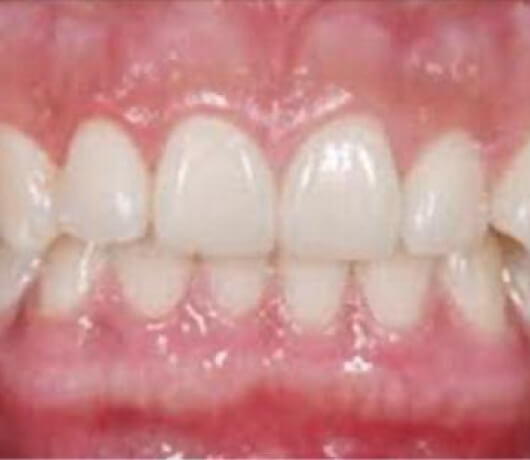
Dental Crowns and Bridges:
A dental crown is often recommended following root canal treatment or to restore severely damaged or decayed teeth. Dental bridges offer a solution for replacing multiple missing teeth when implants are not suitable. Bridges rely on the support of adjacent teeth to bridge the gap caused by missing teeth.
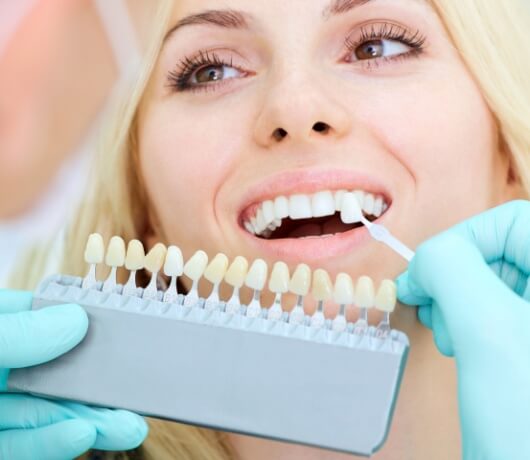

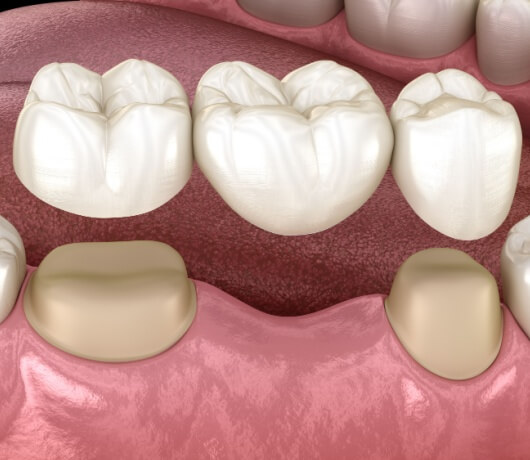


Oral Prophylaxis
Maintaining optimal oral hygiene is crucial for your dental health. We recommend regular scaling and prophylaxis visits every three months to ensure the cleanliness of your teeth and gums, promoting a healthy oral environment.
Tooth-Colored Fillings (Composite Restorations)
Composite restorations provide a safe and aesthetically pleasing option for restoring decayed teeth. These fillings are custom-made to match the exact color of your natural teeth, resulting in a seamless appearance. Additionally, they are mercury-free, eliminating any potential health risks associated with traditional metal amalgam fillings.

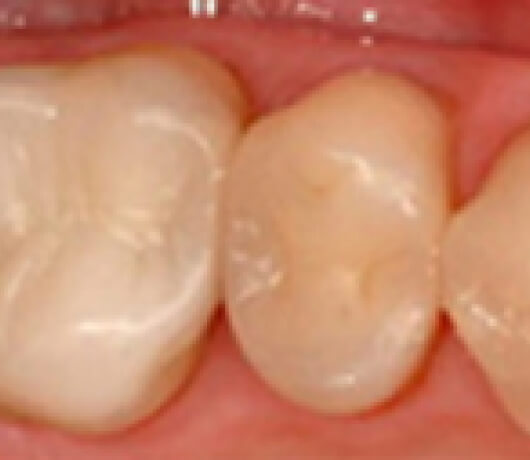

Extractions
In cases where a tooth is severely compromised by infection and has little chance of recovery, extraction becomes necessary. At Dental Solutions, we adhere to the philosophy of Pamper, Protect, Preserve, ensuring that extraction is considered only as a last resort option. Our priority lies in preserving your natural teeth whenever possible, utilizing extraction only when absolutely necessary for the preservation of your oral health.
Complete Dentures/Partial Dentures
For situations where dental implants are not suitable, acrylic dentures offer a solution for replacing missing teeth. Advancements in dental technology have led to dentures that are more natural-looking and comfortable than ever before. Crafted using high-end techniques in a dental lab, these dentures restore both your smile and confidence, providing a functional and aesthetically pleasing solution.
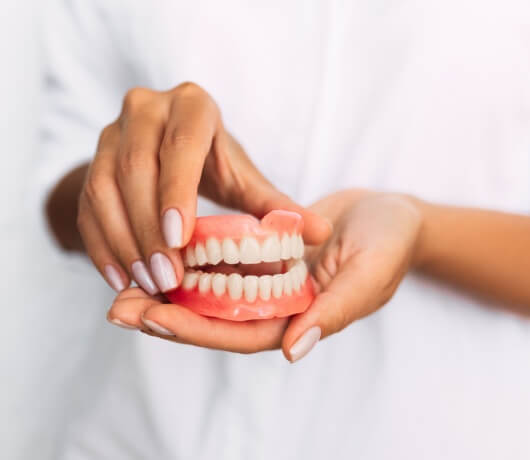

Root Canal Treatment (RCT)
Root canal treatment is a vital procedure aimed at disinfecting and replacing the internal tissues of a tooth that has been infected or injured. This treatment involves the removal of the infected nerve (pulp) from inside the tooth, followed by meticulous cleaning and shaping of the tooth's canals. The procedure is then finalized by filling these canals with an inert material, typically Gutta Percha. Finally, a protective cover, known as a crown, is placed over the treated tooth to restore its strength and functionality.

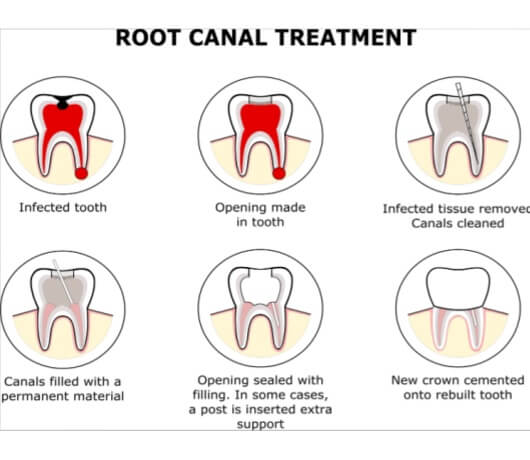
When is Root Canal Treatment Necessary?
Root canal treatment becomes necessary when extensive decay (caries) affects a tooth, reaching the nerve within. If left untreated, such a tooth can become severely infected, leading to pain and swelling.
Benefits of Root Canal Treatment
Root canal treatment is crucial for restoring and preserving the affected tooth for an extended period. A tooth treated with RCT can effectively resume normal functions such as chewing and biting. It also helps in maintaining proper alignment of the bite, functioning like any other natural tooth.
Is Root Canal Treatment Painful?
With the advanced anesthesia techniques utilized at TDL, any discomfort associated with root canal treatment becomes a thing of the past, ensuring a comfortable and pain-free experience for the patient.
Number of Treatment Sessions:
Root canal treatment can typically be completed in a single session, although multiple visits may be required in certain cases to ensure thorough treatment and optimal results.
Why do I need to get my wisdom teeth out?
The removal of wisdom teeth is often recommended when there isn't sufficient space in the mouth for them to properly erupt. These third molars can cause overcrowding, pushing adjacent teeth out of alignment. In certain cases, it may be beneficial to extract wisdom teeth before the eruption of all first and second molars. Failure to remove impacted wisdom teeth can lead to pain and potential infections.

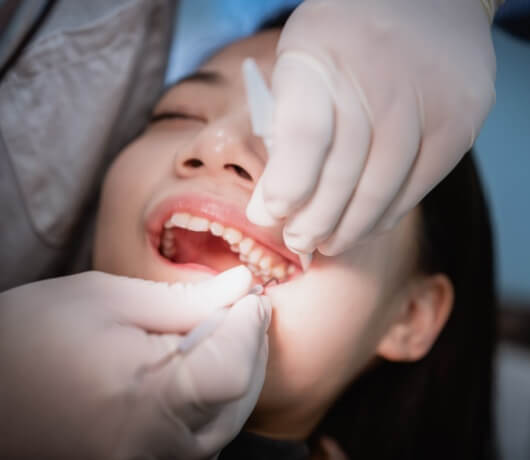
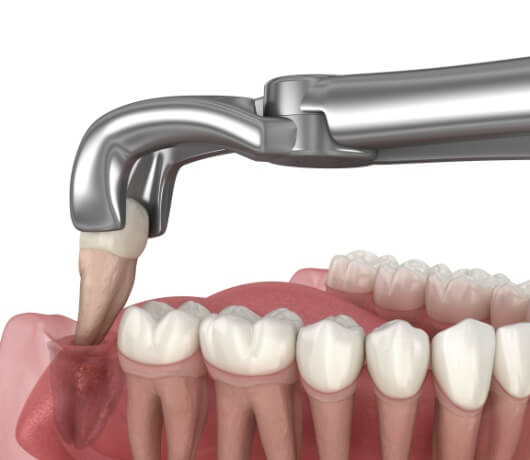

Extraction Options
For wisdom teeth that have fully emerged and are properly aligned, traditional extraction techniques are employed, involving the numbing of the surrounding area before gently pulling out the tooth. However, if the wisdom teeth are impacted or have not erupted through the gum surface, surgical extraction is necessary. This procedure involves making an incision in the gum tissue to expose the tooth, followed by careful extraction, cleaning of the area, and suturing of the gums, all performed under local anesthesia by qualified oral surgeons.
Recovery Process
Following a wisdom teeth extraction, patients may experience tenderness and swelling. Applying ice packs or cold compresses to the affected area can help reduce swelling. Pain and swelling can also be managed with prescribed medications. Patients are advised to take a few days off from work or school to rest and allow for proper healing.
Post-Extraction Diet
During the recovery period, it's important to consume soft, cold foods such as yogurt, pudding, ice cream, and milkshakes to avoid irritating the tender gums. Patients should avoid sharp or hard foods until advised otherwise during a follow-up appointment.
How do I learn more?
For more information about wisdom teeth extraction and to determine if you require the procedure, schedule an appointment at our clinic. Our team will evaluate your condition and provide personalized recommendations for your dental health needs.
Orthodontic Treatment
Orthodontic treatment involves the use of dental braces to address various tooth and bite issues, including crowding, spacing, protrusion, and misalignment. While braces were traditionally associated with children, they are now increasingly popular among people of all ages seeking to optimize their dental health. Different types of braces are available to suit individual needs, with options that are less noticeable when worn.
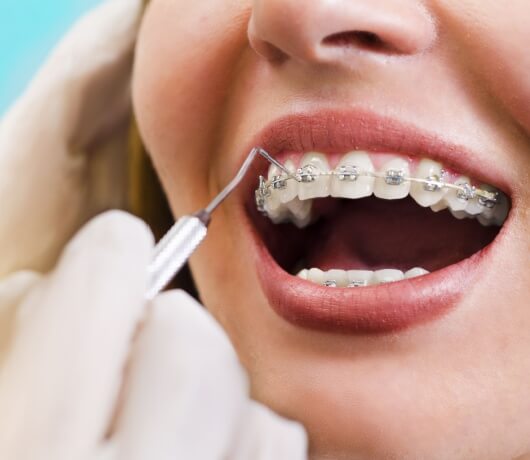
Metal Braces
Maintaining optimal oral hygiene is crucial for your dental health. We recommend regular scaling and prophylaxis visits every three months to ensure the cleanliness of your teeth and gums, promoting a healthy oral environment.
Lingual Braces
ingual braces are placed on the inner surfaces of the teeth, making them less visible from the outside. They offer a discreet alternative to traditional metal braces.
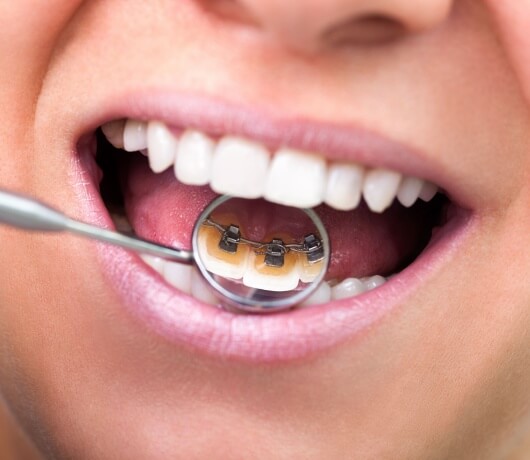
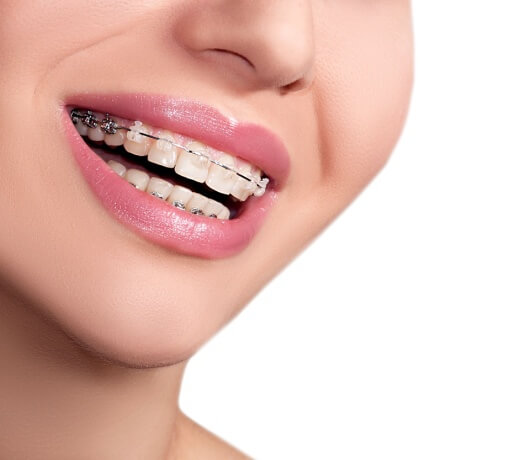
Ceramic or Clear Braces
Ceramic or clear braces are increasingly popular due to their discreet appearance. Made of composite materials, they blend in with the natural color of teeth and are less noticeable. However, they may require longer wear time and can be more expensive than metal braces.
Clear Aligners
Clear aligners, also known as "invisible braces," are a modern alternative to traditional braces. These custom-made, clear plastic trays gradually shift the teeth into alignment. They are removable and virtually invisible when worn, offering a discreet and comfortable orthodontic solution.
How Aligners Work
Clear aligners are custom-designed to fit snugly over the teeth and exert gentle pressure to move them into the desired position. As one of the latest advancements in orthodontic technology, clear aligners provide a braces-free option for achieving a healthy and beautiful smile.
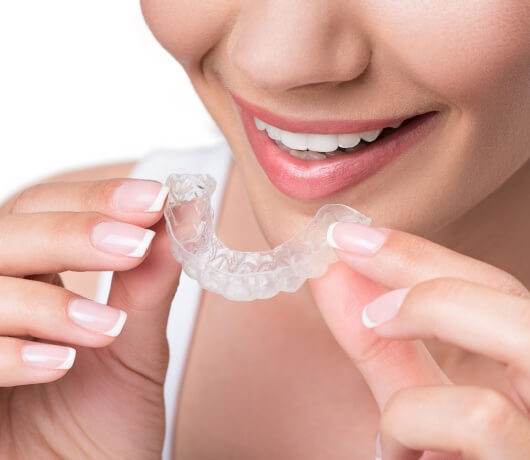
Periodontic treatment focuses on diagnosing and managing conditions affecting the gums and supporting structures of the teeth. This includes addressing issues like gum disease, gingivitis, and periodontitis through various therapies such as scaling and root planing, gum surgery, and antibiotic treatments. The goal is to restore gum health, prevent further damage, and preserve the integrity of the teeth and surrounding tissues.
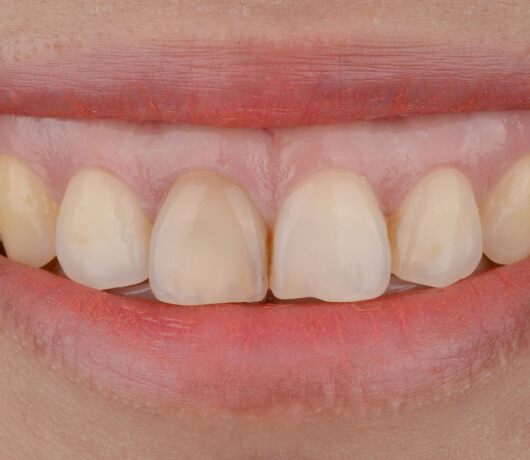

Gummy Smile Correction
A gummy smile can result from various factors such as teeth grinding, a short upper lip, or an elongated upper jawbone. This condition occurs when the gums appear overly prominent, making the teeth appear smaller than they are. Surgical intervention may be necessary to reduce excess gum and bone tissue, restoring a more balanced and aesthetically pleasing smile. Cosmetic gum surgery techniques, often utilizing lasers, can effectively reshape the gum line, resulting in a more proportional appearance of the teeth.
Frenectomy
A frenectomy is a surgical procedure aimed at addressing an abnormally wide or long frenum, the tissue that connects the gums to the lips. When the frenum extends excessively, it can create gaps between teeth or interfere with proper dental alignment. This procedure, performed by a general dentist, oral surgeon, or specialist, involves removing or adjusting the frenum to improve oral function and aesthetics.
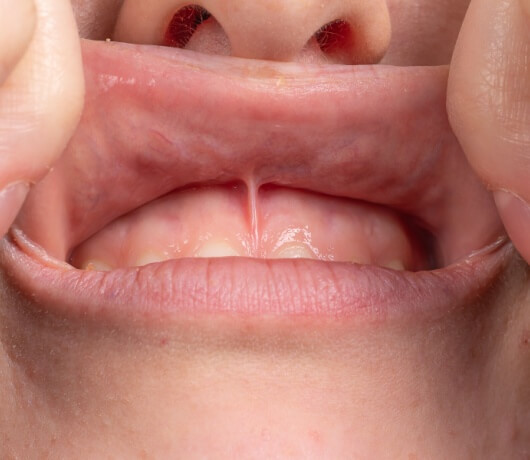
Types of Gum Surgery Procedures
Excessive Gingival Display (Gummy Smile Correction)
Cosmetic gum surgery is performed to reduce excess gum and bone tissue, enhancing the appearance of the smile. Techniques such as laser gum contouring can sculpt the gum line to achieve a harmonious balance between the teeth and gums, resulting in a more confident smile. Following surgery, patients may be prescribed antibacterial mouth rinses to promote healing and maintain oral hygiene.
Gum Recession (Long Tooth Smile Correction)
Gum recession can lead to exposed tooth roots, root sensitivity, and aesthetic concerns. To address this, tissue grafting procedures are performed to reinforce thin gums or fill in areas where recession has occurred. This involves taking tissue from the roof of the mouth and grafting it onto the gum line to restore proper tissue levels and protect the tooth roots. Antibacterial mouth rinses are often recommended post-surgery to aid in healing and prevent infection.
Benefits and Drawbacks of Gum Surgery
Advantages
- Rapid healing and noticeable improvement in smile aesthetics
- Enhanced gum health, potentially reducing sensitivity to hot and cold stimuli
- Protection against further gum shrinkage and root decay
Disadvantages
- Surgical nature entails inherent risks and requires anesthesia
- Procedures may be performed in segments under local anesthesia or entirely under general anesthesia for comprehensive treatment.
